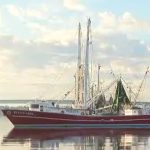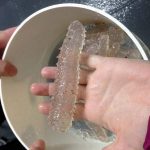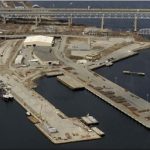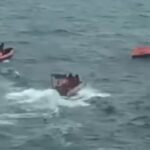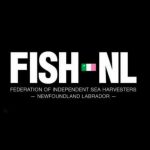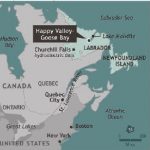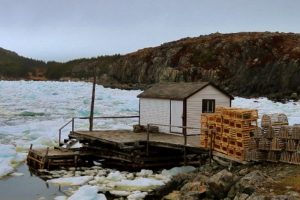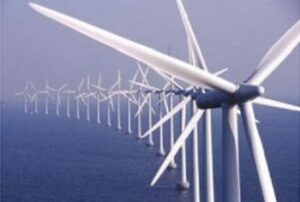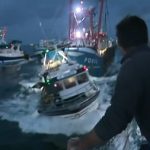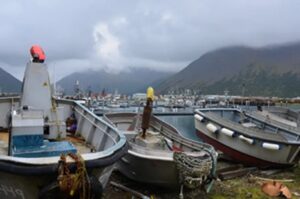New Protected Species Regulations Finalized for Fixed Gear Fisheries
New Protected Species Regulations Finalized for Fixed Gear Fisheries and Industry Outreach on Required Gear Modifications
This advisory serves to provide you with information regarding new protected species regulations. This includes a description of the new regulatory requirements, resources available to assist commercial trap fishermen in complying with the new gear modification and weak rope rules, and additional information germane to DMF’s ongoing efforts to protect the North Atlantic right whale.
New Regulations Enacted
The Marine Fisheries Advisory Commission approved several new regulatory measures at their January 28, 2021 business meeting affecting protected species and fixed gear fishing in Massachusetts (Advisory). These regulations have been filed with the Secretary of State and will be implemented as of March 5, 2021. The seasonal closure rules will be effective March 5, 2021, whereas the gear modification rules will not go into effect until May 2021 to provide fishermen with time to alter their gear configuration. More details on each new regulatory provision are provided in the bullets below.
- Seasonal Commercial Trap Gear Closure. A new commercial trap gear closure goes into effect on March 5, 2021. This new regulation extends the prior seasonal state waters commercial trap gear closure in both space and time. The prior closure occurred from February 1 – April 30 within Cape Cod Bay, Stellwagen Bank, and the Outer Cape Cod Lobster Management Area. The new closure area extends north in state waters from Scituate Harbor to the New Hampshire maritime border (see map) and the closure duration is extended through May 15. However, during the May 1 – May 15 period, the closure will occur on a dynamic basis allowing DMF to lift the closure (or parts thereof) if whales no longer remain in state waters. The closure does not extend into those southern state waters in Lobster Conservation Management Area 2. As this closure extension is being implemented in-season this year, all trap gear must be removed from the new closure area by March 5, 2021.
- Seasonal Commercial Gillnet Closure. A new commercial gillnet closure goes into effect on March 5, 2021. This new regulation spatially extends the January 15 – May 15 commercial gillnet closure in Cape Cod Bay to include a discrete area along the South Shore between Plymouth and Scituate. The northern boundary of this closure is now 42°12’N (see map).
- Weak Rope Requirements for Commercial Trap Gear. Effective May 1, 2021, this new regulation will require all commercial trap fishermen to fish buoy lines that break when exposed to 1,700 pounds of tension. This may be achieved by fishing specially manufactured buoy lines with a custom 1,700 pound breaking strength or by inserting NOAA Fisheries approved contrivances into the top 75% of the buoy line every 60’. Currently, the only approved contrivance is the so-called “South Shore Sleeve.” For more information on how to comply with this measure, please review the section on approved weak rope and contrivances below and visit DMF’s new Trap Gear Modification webpage (https://www.mass.gov/service-details/buoyline-trap-gear-modifications).
- Maximum Buoy Line Diameter for Commercial Trap Gear. Effective May 1, 2021, all commercial trap fishermen are to fish buoy lines with a maximum diameter of 3/8”.
- Recreational Lobster and Crab Gear Closure. DMF has established an annual November 1 – May 15 recreational lobster and crab trap gear closure. This requires recreational lobster and crab trap fishermen to remove their gear from the water by November 1 and not resent the gear until after May 15. This new rule goes into effect this year on March 5, 2021; this corrects the prior advisory that indicates the rule would not be effective until November 1, 2021. As this is being implemented in-season, recreational trap fishermen are advised to not set trap gear until after May 15, 2021. If gear is currently in the water, then it may be removed and returned to the owner by the DMF or the Massachusetts Environmental Police. This closure period applies only to buoyed recreational lobster and crab trap gear and not unbuoyed gear that is fished and retrieved from the shoreline.
- Maximum Buoy Line Diameter for Recreational Trap Gear. Effective May 15, 2021, all recreational trap fishermen are to fish buoy lines with a maximum diameter of 5/16”.
Approved Weak Rope and Contrivances
To assist commercial trap fishermen in complying with the new 1,700 pound weak rope rules, the DMF is developing a list of NOAA Fisheries approved ropes or contrivances. At present, only three options are available: (1) Rocky Mount Cordage Company’s fully formed 1,700 pound weak rope – Red – 3/8” diameter (runs slightly smaller than true diameter); (2) Rocky Mount Cordage Company’s fully formed 1,700 lb weak rope – “Candy Cane” – 3/8” diameter; (3) Novabraid break-away “South Shore” sleeve.
DMF is supplying samples of the weak rope and Novabraid sleeves at no cost to industry. At present, we can provide every coastal lobster permit holder with 2 coils of weak rope and up to 20 of the Novabraid sleeves. In the coming weeks DMF will be setting up several gear distribution events throughout the state where fishermen can meet a DMF staff member and pick up the free coils and sleeves. We will send out notice of these events to all permit holders once the dates and locations have been established. This information will also be posted on the Trap Gear Modification webpage. Stay tuned for more details.
There is opportunity for additional ropes or contrivances to be approved by NOAA Fisheries. For a weak rope or contrivance to be approved, samples must be tested on a rope breaking machine and the results reviewed by NMFS. With the assistance of several commercial lobstermen, DMF is in the process of developing additional contrivances. These include several options that use small sections of the approved weak rope and use different splices, “lazy splices” and tucks inserted into standard buoy lines. DMF is in the process of having these tested and hopes to have them approved by NOAA Fisheries by mid-March. As more options are tested and approved, DMF will post these on its Trap Gear Modifications webpage.
For more information on gear modifications, please email us at [email protected].
Additional Information
Please note that DMF did not enact a proposal that would have prohibited lobster trap fishermen from fishing single traps if fishing from a vessel with an overall length of 29’ or larger beginning in 2022. Instead the MFAC will convene a subcommittee to address options to reduce buoy lines in state waters. DMF anticipates the sub-committee will meet this spring to further address the potential risk of entanglement posed by vertical buoy lines. Additionally, and as previously announced, DMF has launched a “ropeless” fishing gear feasibility study. More information about this project can be found here. DMF has also set aside a “reserved” section of regulations and will be working with NOAA Fisheries to consider how to move forward with research into the efficacy of ropeless fishing technology.


































